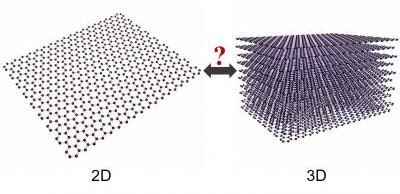Sep 24 2019
New research at the Queen Mary University of London shows that graphene is both a 3D material and a 2D material.
 The Queen Mary research shows that graphene is 3D as well as 2D. (Image credit: Yiwei Sun)
The Queen Mary research shows that graphene is 3D as well as 2D. (Image credit: Yiwei Sun)
Understanding that it is a 3D material is crucial for appreciating its mechanical properties and for building innovative graphene-based devices.
Graphene is usually termed a “wonder material” and has the highest recognized electrical and thermal conductivity. It is also flexible, stronger than steel, light, and transparent. It finds wide-ranging applications and, lately, has been proven to act as an obstacle against mosquito bites.
In this research, which was reported in the journal Physical Review Letters, the team asked two basic questions: to what degree is graphene graphite, and what is the real thickness of graphene?
To their astonishment, they learned that 2D graphene, which is a flat single layer of carbon atoms organized in a honeycomb structure, has several identical mechanical properties as 3D graphite, which is a naturally existing form of carbon composed of a very weak stack of numerous layers of graphene.
They demonstrate that graphene shares a comparable resistance to compression as graphite and that it is considerably thicker than is generally believed.
If the thickness of a block containing 100 layers of graphite is measured, the thickness of a single graphene layer is just the thickness of the graphene block divided by 100. Thus, it is logical to believe the thickness of graphene as 0.34 nm.
Graphene owes its thickness to an array of chemical bonds sticking out above and below the 2D plane of carbon atoms. Hence graphene is really a 3D material, albeit with a very small thickness.
Dr Yiwei Sun, Study Lead Author, Queen Mary University of London
Dr Yiwei Sun added, “By applying conventional 3D theory, which has been used for around 400 years, to 2D materials such as graphene, which have been known for 15 years, we show that similar arguments apply to other so-called 2D materials, such as boron nitride and molybdenum disulfide. In that sense, 2D materials are actually all 3D.”
Graphene is usually referred to as the world’s first 2D material, which was discovered in 2004 by peeling off graphene flakes from bulk graphite (used in lubricants and pencil leads) with the help of sticky tape.
It is seen as part of a new group of 2D materials. At present, researchers model this material as a sheet of atoms with very little depth; therefore, it is classified as a 2D material.